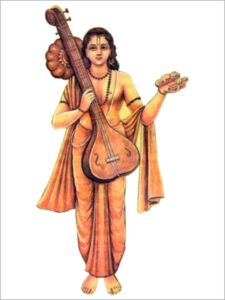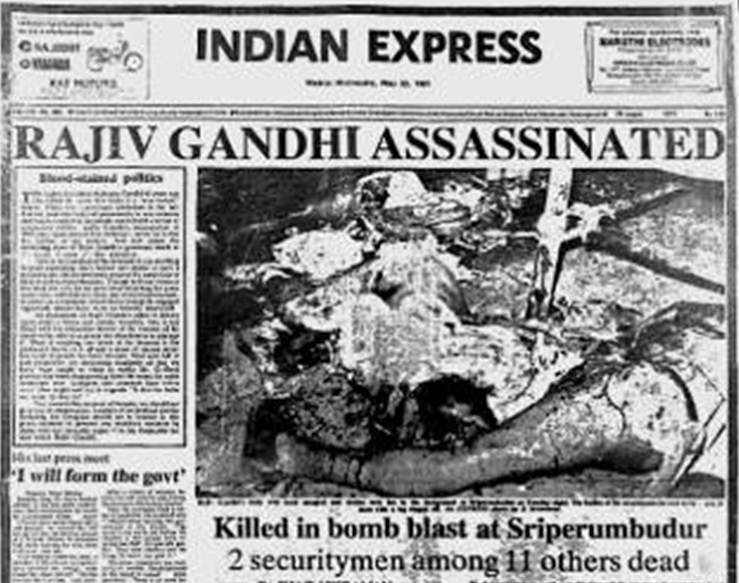
- The Himalayan region of India has always been attracting sages and saints. The sages Ashtavakra, Devarishi Narad, Maharishi Vyas, Parasuram, Guru Gorakhnath, Machindarnath etc. chose the Himalayas for their cultivation.
- Therefore, in the Hindu culture, Devarishi Narad is described in the scriptures that he is the son of Brahma, a devotee of Vishnu and a disciple of Jupiter. Because of his travels in all the three worlds, he is known as a public welfare messenger and public communicator because in ancient times, communication, communication system was mainly oral and people used to gather for fairs, pilgrimage, yagadi programs, where they used to exchange information.
- In fact, Devarishi Narad was a great scholar, musician, marmagya (knowing the secret) and a devotee of Narayan. The 84 Bhakti Sutras composed by him are famous. Many mystics including Swami Vivekananda have written commentaries on the Narad Bhakti Sutra. In Hindu culture, it is only natural for the devotees of Vidya to invoke Lord Ganesha for the auspicious work, while starting the editorial work.
- India’s first Hindi weekly ‘Udantmartand’ started from Kolkata on 30 May 1826. On this day the editor expressed his pleasure that this magazine is going to be published on the auspicious occasion of Devarishi Narad’s birth anniversary (Vaishakh Krishna Dwitiya) because Narad ji is an ideal messenger, he had equal communication in all three worlds. Devarishi Narada is different from other sages in such a way that he does not have his own ashram. He lives on a continuous journey and every incident inspired by him resulted in public interest. Therefore, in the present context, if Narad is said to be the best public communicator of the world till date, then nothing will be an exaggeration.
- The glory of holy rivers, Ganges etc. and the grandeur of holy pilgrimages; Yoga, Varnashrama-arrangement, Shraddh etc. and description of six Vedangas and authentic introduction of all the 18 Puranas are the characteristics of ‘Naradpuran’. Practical subjects are represented in Narad Smriti.
- If you make a subtle study of the 84 devotional formulas composed by Narad, then not only journalism but for the whole media, eternal principles are seen to be advocated. According to the Bhakti Sutra composed by him, there should be no distinction due to caste, knowledge, form, total, wealth, work etc. There is also a big phase of debate in today’s journalism and media. Constantly meaningless and endless discussions are seen on the media.
- In the 26th verse of the 10th chapter of Shrimad Bhagwatgita, Shri Krishna says to Arjuna:
Ashwattha: Sarvrivakshanam Devarshinam Ch Narad:|
Gandharvaanam Chitraratha: Siddhanam Kapilo Muni:||
That is, I am the Ashwattha tree (the tallest and beautiful tree, which worshiped by people in India regularly as a rule) among all trees and I am Narad among the Goddesses. I am Chitraratha in Gandharvas and Kapil Muni among perfect men.
Devarishi Narad was a skilled mediator who played a public welfare communicator and messenger that is relevant even today in journalism and media.
- When Narad suddenly appeared anywhere, what did the host expect? Not every deity, human or demon expected any commercial or diplomatic dialogue with them. Narada used to bring news only. There is no reference when Narada went somewhere to perform the formalities or ‘courtesy visit’. The first thing is that the circulation of news was the main task of Narad’s life, so there is no doubt in considering him as a journalist. In today’s context, we can consider it as the objective of journalism.
- The most important feature of Narad as the conductor of news is his social benefit. No dialogue of Narad hurt the country or society. There are definitely some references in which seem that Narad is churning, causing discord. But when we see the long-term results of that dialogue, then eventually they bring positive changes in some way. Therefore, considering Muni Narad as the most efficient public communicator in the world, the third important principle of journalism can be propounded that the religion of journalism is the social interest.
Relevance of Devarshi Narad in present day public welfare as communicator and messenger
Spiritualism and devotion have great importance in Hindu society. Devotion is called the ultimate aspiration of surrender to God. This tradition of devotion has been going on continuously since time immemorial. The Himalayan region of India has always been attracting sages and saints. Siddhas, sages and seekers consider the Himalayas to be the best places of worship for their spiritual practice for thousands of years. Rishi Ashtavakra, Devarishi Narad, Maharishi Vyas, Parasuram, Guru Gorakhnath, Machindarnath, Satyanath, Garibnath, and Balaknath etc. also chose the Himalayas for their cultivation. It is also said that Gorakhnath attained supreme accomplishment right here.
Therefore, Devarishi Narad has a special character and place in Hindu culture. If we look at the history of Indian scriptures, Narad ji is mentioned at different places. There is a description in the scriptures that he is the son of Brahma, a devotee of Lord Vishnu and a disciple of Jupiter.
He is also known as a public welfare messenger and public communicator because in ancient times information, communication, communication system was mainly oral and exchange of information when people gathered for fairs, pilgrimage, yagadi programs, where they used to exchange information.
In fact, Devarishi Narad was a great scholar (he was brought up among the sages and because of his deeds and quality), musician (inventor of the veena), marmagya (knowing the mystery) and devotee of Narayana. There are 84 Bhakti Sutras composed by him. Many mystics including Swami Vivekananda have written commentaries on Narad Bhakti Sutra. Just as India has a tradition that there is a presiding deity to initiate every auspicious work like invoking Ganesha or Saraswati, worshipers of Vidya, invoking Hanuman ji or Durga, worshipers of Shakti and people associated with Vaidya Shastra worship Dhanvantari. With this view, it is natural to invoke the god Rishi Narad while starting any editorial work.
India’s first Hindi weekly ‘Udanta Martand’ started from Kolkata on 30 May 1826. On this day there was Vaishakh Krishna Dwitiya, Narad Jayanti and on the first page of the first issue of this magazine, the editor expressed the joy that this magazine is going to be published on the auspicious occasion of the birth anniversary of Devarshi Narad because Narad ji as his ideal messenger. There was equal communication between the three worlds (Dev, Human, Demon).
Nobody took the information received by him lightly. His efforts in the field of information communication were innovative, prompt and productive.
Limeaments of Devarshi Narad:
- Narad ji is different from other sages and saints in such a way that he does not have their own ashram.
- He lives on a continuous journey. But this stay is not private. In this migration too, contemporary important gods, humans and asuras contact and their questions, their statements and their sarcasm give direction to all.
Public interest is reflected in his every consultation and every statement somewhere. Narad Ji used voice in a way that led to the creativity of events. Every incident inspired by him resulted in public interest.
Therefore, in the present context, if Narad is said to be the best public communicator of the world till date, then nothing will be an exaggeration.
Narad Puran: The glory of the holy rivers, Ganges etc. and the grandeur of holy pilgrimages; the description of devotion, knowledge, yoga, meditation, varnashrama-system, virtue, fast, shraddha etc. have been mentioned in ‘Naradapurana’, but the description of the six Vedangas especially detailed description of Triskandha astrology, mantra-tantra learning, atonement- legislative and authentic introduction of all eighteen Puranas are important features of ‘Naradpuran’.
Narad Smriti: Practical subjects are represented in Narad Smriti. There is a law on matters like justice, salary, sale of property, purchase, rights, crime, loans etc. There is also mention of Narad musical text in this memory.
Narad Bhakti Sutras: If you make a subtle study of the 84 devotional formulas composed by Narad, then not only journalism but the entire media is seen to be advocating eternal principles. How relevant is the Bhakti Sutra 72 written by him: Sutra 72 is a very beautiful sentence to nurture unity, in which Narad ji denies the factors that make the difference in society.
नास्ति तेषु जातिविधारूपकुलधनक्रियादिभेद: ||
That is, there should not be any difference due to caste, education, form, total, money, work etc. For whom journalism should be related and for whom it is an important subject, whose solution is found in this formula. There is a big phase of debate in today’s journalism and media. Continuously meaningless and endless discussions are seen on the media. In Sutra 75,76 and 77 it is advised that time should not be wasted in debate, because debate does not change opinion.
The above content, written as Naradji’s messenger and communicator, leads to the conclusion that there can be only two foundations of human journey from the initial journey till today – curiosity and dialogue creation. Dialogue is the primitive nature of man. After knowing the secret, the common man cannot keep it secret for a long time. He will share it with one of them. It is from here that dialogue begins. When this knowledge or secret is told publicly, it falls into the category of mass communication. Broadly, journalism too, which has come to be known as media since last few years, is based on these two basic concepts of mystery and dialogue. The word journalism may not be found in ancient Indian speechless, because the word has emerged in Indian languages through translation from the English language. In the English language, which is called journalism, in Indian languages, it was called journalism(patrakarita). Indian languages probably did not understand the need to find a native word for the word media, so Indianness took the word in its original form. But in the western world, journalism has been integrated into the broader subject of ‘Mass Communication’. But now translators used the word mass communication. In this background, Naradiya tradition has to be outlined in modern journalism or media. With the introduction of social media or new media, the Naradiya tradition in journalism has become even more relevant.
In the 26th verse of the 10th chapter of Shrimad Bhagwatgita, Lord Shri Krishna says to Arjuna:
Ashwattha: Sarvavrikshanama Devarshimaan ch Narada: |
Gandharvaanam Chitraratha: Siddhanam Kapilo Muni: ||
That is, I am the ashwattha tree in all the trees, and Narad among the sages. I am Chitraratha in Gandharvas and Kapil Muni among perfect men.
The life character of Lord Rishi Narad shows that he was the inventor of Veena and was a public welfare communicator and messenger playing the role of a skilled intermediary who is relevant to journalism and media even today.
Anywhere when Narad suddenly appeared, what did the host expect? Not every deity, human or demon expected any commercial or diplomatic dialogue with them. Narad used to bring news only. There is no reference when Narad went somewhere to perform the formalities or ‘courtesy visit’. The first thing is that the circulation of news was the main task of Narad’s life, so there is no doubt in considering him as a journalist. In today’s context, we can consider it as the objective of journalism.
Narad as the conductor of news is most characteristic of his society. No dialogue of Narad hurt the country or society. There are definitely some references in which it seems that Narad is chewing, causing discord. But when we see the long-term results of that dialogue, then eventually they bring positive changes in some way. Therefore, considering Muni Narad as the most efficient public communicator in the world, the third important principle of journalism can be propounded that the religion of journalism is the social interest.

